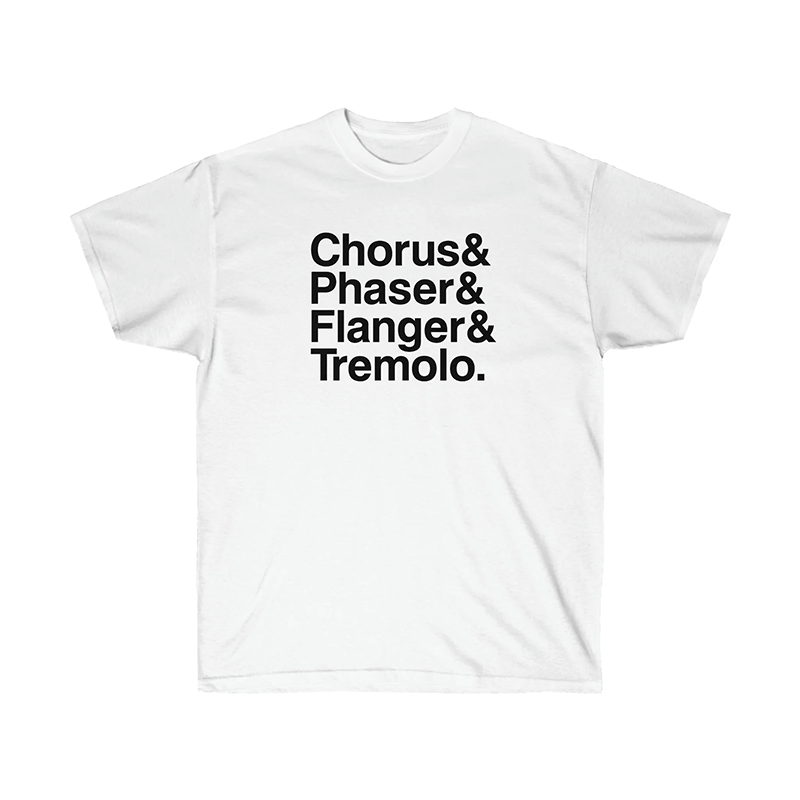(This article comes from our friends at GuitarTricks.com – check out their site for tons of guitar-related tips and tricks!!)
The History of the Space Echo Echo Echo…
By Shawn Leonhardt for Guitar Tricks and 30 Day Singer, the original platform for online guitar lessons.
History of the Space Echo Echo Echo…
Before the electric guitar was invented, guitarists were limited on using reverb and delay in their music. The final sound would be up to the natural or even manufactured acoustic environment that they played in. But with effect’s units like the Roland Space Echo it soon became possible to create amazing and layered sounds.
What is Reverb and Delay?
If you have ever shouted in a stairwell, a canyon, or a tunnel you have likely heard your voice reverberate. It is simply the echo of the initial sound, with the size of the space determining the amount of echo. Not all reverbs have super clear echos, in some cases a smaller room just creates a slight reverb. The effect can give the sound more space and volume depending on its use.
Delay is created when that echo signal is played repeatedly. Both reverb and delay are similar terms that deal with shifting the time of the guitar signal, and they both create a huge variety of sounds. Before effects units and pedals existed, bands would find natural ways to control the overall reverb of the tune. The Beatles recorded “Yer Blues” in a large closet where they were all tightly packed in, greatly enhancing the song’s vibe.
Early attempts at making artificial reverb came in the form of echo chambers and electronic manipulation of the sound. If the signal was run through a vibrating metal plate it was called plate reverb. If it was run through a metal spring, it was known as spring reverb. And the reel-to-reel tape machine not only created new reverb, but it was also the first technology that allowed for controlled delay.
The Echo Grows
Elvis Presley’s producer, Sam Philips, was known for connecting two tape machines together to create the “slapback echo.” It was only a slight reverb but became a signature and lasting sound. By changing the distance of the tape heads or interrupting the signal, the producer could make the echo longer. And because the sound was recorded it could now be looped repeatedly.
Engineers used this tape looping to create the first tape echo machines like the Echoplex or EchoSonic. The units allowed the artist to record a sound onto the tape, and then control the delay by adjusting the heads. These tape delay effects were standard among many 1960’s artists, but most often with a light echo just to help create a fuller sound.
It was the Jamaican reggae dub musicians that took the effect of delay to new levels. They used the tape machine and mixing board as another instrument in the band. Producers like King Tubby and Lee Scratch Perry took the popular dance music and manipulated the tape to have obvious delay and other effects. Tape machines allowed for this great new style of remixing, but the tape still had its problems. Magnetic tape doesn’t provide the best control over the recorded sound. The amplitude and frequency can vary causing “wow” and “flutter” and the tape wears quickly.
As reverb and delay became more important in music styles, new tape echo machines were created. Japanese engineer Ikutaro Kakehashi built several models with one being the famous Roland RE-201 or Space Echo. He did not use reels, instead allowing the tape to move freely. This cut down on tape noise, wear, and wow and flutter. It was a huge hit with the music world, especially the dub artists.
The Roland Space Echo also incorporated a spring reverb, allowing for different acoustical spaces and their delay. It was the ultimate effects unit for shifting the time of your signal, and so popular it was built from 1974-1990. Many bands used it including Pink Floyd, Queen, Bob Marley, and even more modern acts like Radiohead are proponents of the RE-201!
Modern Space Echo Pedals
The Roland RE-201 final sales date of 1990 may give an idea of its fate. The digital revolution didn’t just change how music was sold, it changed how it was recorded. Reverb and delay effects in the 1990’s were often done with digital effects. By creating multiple delay lines and decays we can artificially make our own acoustic spaces.
Digital also made it possible to record more natural reverbs and then mix it in with your signal, this is known as convolution reverb. Before the 20th century, digital delay was seen as cutting edge. In 2007 Boss released the RE-20 which was modeled after the original Roland Space Echo. Despite being the model of the original it was still digital and not analog.
Around 2010 there was a huge resurgence in older analog equipment and the original Roland Space Echo units were desirable once again. This led to renewed interest in all old pedals and gear, not just those for reverb and delay. Ever since that boom engineers have attempted to recreate the inconsistency of analog sound. Wow and flutter used to be problematic, but now people don’t want the perfection of digital.
The most recent iteration of the space echo pedal is the Boss RE-2 and RE-202.The RE-2 is a compact stomp box, while the RE-202 is larger and built as a more perfect recreation of the original Space Echo. Any player looking for the original nostalgia and sound of the space echo will likely be pleased with either of these models. Short of owning an original Roland, this is about as close as you can get.
There are a variety of other delay and reverb effects, the main reason the Space Echo emulations are so popular is because they represent an original workhorse of a machine. The units like the Echoplex and Space Echo were so popular they have been copied repeatedly. When a guitarist is looking to widen their sound with reverb or extend it with delay, the space echo machines are all helpful tools. Whether you have the original analog or modern digital pedals and software, you will have a whole world (and space!) available to time shift your guitar sound.
Shawn Leonhardt is a writer for Guitar Tricks, a platform for online guitar lessons with over 4 million subscribers.
________________________
GET EXCLUSIVE UPDATES, CONTEST INFO, SEE OUR LATEST DEMO VIDEOS AND MORE:
















